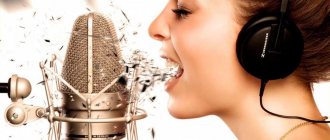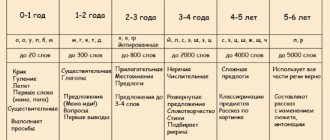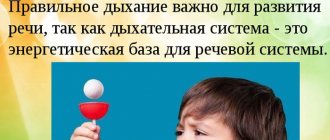Everyone wants to be heard. For a speaker, not only information is important, but also the way it is presented. No one will support the point of view of a person who does not pronounce words clearly, “eats” endings or speaks too quietly.
Diction is correct articulation, clear, intelligible speech that makes it easier for other people to understand what is said. A person with good pronunciation does not lisp, nasal or lisp. Every person has problems pronouncing individual morphemes or sound combinations. And for correct diction, training of the speech apparatus will be required. There are practically no problems with the pronunciation of vowels.
Correct diction is a guarantee of successful employment and communication skills. But good articulation is of particular importance for singers, actors, presenters and teachers. A vocalist with slurred pronunciation evokes double feelings in listeners: he seems to have sung everything correctly, but the words cannot be understood.
Diction is a fundamental element of human culture. Because a person with good pronunciation can convince almost anyone that he is right.
Speech diction
Diction is the clear pronunciation of sounds and words with their correct articulation. The speech apparatus produces sounds, and its violations and defects are the reason that a person’s diction is of low quality.
Speech diction consists of:
- From distinct articulation;
- Correct articulation;
- Manner of pronunciation: tempo and intonation.
Clear articulation - correct and clear pronunciation of sounds. It is thanks to clear articulation that the speaker’s speech is legible and his interlocutors easily understand what he wants to convey. Violation of this indicator of diction may occur due to the physiological characteristics of a person. You can improve the clarity of pronunciation of sounds by training your tongue and lip muscles.
Correct articulation is the coordinated movement of the muscles of the articulatory apparatus. Malocclusions and frenulums have a negative effect on articulation. With such physiological deviations, burr and nasal sound may appear.
Timbre. Often, the manner of pronunciation is influenced by a person’s temperament. The speaker may tend to monotony or speed up his speech. Often it is haste that occurs in people with poor diction. But, as practice shows, almost anyone can “defeat” this problem.
Intonation. As for intonation, it is formed primarily from the ability to clearly pronounce vowel sounds and stress. You can set intonation with the help of some breathing exercises and reading aloud. Improving intonation is very difficult and painstaking work.
Problems with diction in children
A pronunciation defect in children is considered to be a discrepancy between speech and age standards. The following is considered a violation:
- 0-1 month of life: the baby does not cry, even if he feels discomfort;
- 1-4 months: the baby does not respond to speech addressed to him;
- 4-6 months: does not track the toy with the eyes, does not pronounce combinations of phonemes (does not hum, does not coo);
- 6-7 months: does not try to attract the attention of adults by saying anything;
- 7-9 months: pronunciation of simple phonemes is difficult or completely absent;
- 9-10 months: the baby does not speak syllables and does not respond to gestures from adults, does not comply with requests to wave his hand, nod or shake his head;
- 12-18 months: does not speak simple words: dad, mom, give, ball, drink;
- 2 years: no meaningful spontaneous speech.
The norms of speech development are average. All children are individual, so their development may vary. A slight lag is normal. However, it requires attention from parents.
In preschool children, diction disorders such as unintelligibility of speech and inability to pronounce individual sounds are recorded: hissing, whistling or sonorant.
Working on diction and pronunciation
Oratorical talent is extremely rare. Almost all famous people intensively prepare for every public appearance. It is known that Cicero could not utter a single word without preparation. And he is still held up as an example as a great rhetorician.
There are many exercises with which your speech can become clear and beautiful. Among them are both universal exercises and those that are designed to help correct a specific problem. For example, a whistling “S”, an indistinct “L” or a violation in the pronunciation of the sound “R”. In order to solve these problems you will have to work.
How to develop articulation
To develop articulation, it is necessary to remove the “clamps” and strengthen the necessary muscles. The “clamps” are removed from the jaw to allow the mouth to open freely. Next, we strengthen the muscles of the lips, cheeks and tongue.
In this video I show how to improve your diction using a felt-tip pen >>>
To remove the clamps, you need to use exercises to lower the jaw and lay down the tongue. At the beginning of singing, the tongue may rise and puff up, tense and pinch the larynx. In fact, we only need the tongue to extract consonant sounds, but on vowels it lies freely behind the lower teeth.
Workshop: exercises for developing speech and voice diction
Exercise to relax your tongue
We take a chopstick (it can be a sushi stick, a pen, a spoon), open our mouth and stick out our tongue. We place the tongue with a stick, press it lightly and try to make vowel sounds in this position.
Jaw relaxation exercise
To lower the jaw, place two fingers vertically between the teeth. In this case, the upper lip should be raised. In this position, you need to try to extract the vowels “a” and “e”.
Achieve a certain rigidity in pronouncing sounds. The chants “ya-ya”, “na-na”, “di-da-do-doo”, etc. will help here. To train the lips - combinations of voiceless and voiced consonants “p-b”. For the larynx - “k-g”. You need to achieve a clear and at the same time “explosive” sound when working with consonants.
Tongue Twisters
Tongue twisters are good for working with consonant sounds, as well as on the mobility of the entire articulatory apparatus. They need to be spoken rhythmically, exaggerating the sounds and maintaining a vocal mask. You can make the task more difficult by placing two walnuts behind your cheeks or holding a felt-tip pen between your teeth. This creates extra practice and makes your speech very clear. After just one such lesson, you will notice the result and your friends in a telephone conversation will most likely also note the improvement in your diction. In any conversation, you will sound more convincing and people will listen to you.
Notice how clearly and expressively the specially trained managers speak when they are selling you something. This is due to the fact that clear speech has a strong impact on the listener, including vocals.
Articulation gymnastics
Articulation gymnastics is very useful - movements of the lips and tongue without sound.
You can do the following exercises:
- twisting in both directions and pulling the tongue up and down,
- pulling into a pipe and stretching the lips,
- rotation of closed lips in a circle,
- bringing the tongue into a “boat” shape, sticking it out, making it flat, narrow, raised, tense.
Articulation is closely related to pronunciation. In foreign languages, sounds are articulated differently; some sounds do not exist in the Russian language. This needs to be dealt with separately.
Articulation is related to rhythm: clear accentuation of consonants gives an additional “pump up” of the rhythm - this is why rap sounds so rhythmic. To perform it, you need to have excellent diction and a sense of rhythm.
It is important not to swallow or chew the endings of words: keep the sound until the end and remove it in a timely manner. This is a sign of high skill of the performer. The length of each word and sound must be predetermined, some words may be shorter and others longer. All this needs to be taken into account.
Exercises for diction and voice
When speaking in public or during normal conversation, we use the muscles of the tongue and throat. It is logical that in order to speak beautifully, you need to “pump up” these muscles.
Exercises that will help prepare the necessary muscles:
- You can pump up the muscles involved in producing sounds by regularly pronouncing “A-E-O”. At the same time, it is important to try not to open your mouth too much. The effect can be achieved by pronouncing sounds as deep as possible in the oral cavity.
- A very good effect can be achieved in diction and by training your lips. To do this, you need to say: “GL”, “VL”, “VN” - for the upper lip and “KS”, “GZ”, “VZ”, “BZ” - for the lower lip.
- You can also shape your tongue into a shovel shape and say “I” and “E” several times. Now let’s give the tongue a hook shape and simultaneously pronounce “O” and “U”.
- We continue to “pump up” the muscles of the tongue. We close our mouth and, using internal movements of the palate, cheeks and lips, make the sound “M”.
Do you need a doctor for problems with diction?
In most cases, if diction is impaired, they turn to a speech therapist. However, it is also worth consulting with your dentist and facial surgeon. The latter will rule out bone tissue pathology, prescribing surgery if necessary. The cause of unclear diction may be ankyloglossia, a congenital anomaly in which the frenulum of the tongue is underdeveloped. If the defect does not disappear on its own during preschool age, surgical intervention is necessary.
The dentist will sanitize the oral cavity and evaluate the dentures. Installing a denture that is too tight or too small changes the anatomy of the jaw, impairing diction.
When a malocclusion is diagnosed, the patient is fitted with a mouthguard, plate or braces. Depending on the severity of the disorder, eliminating the pathology will take from six months to several years. Correcting the bite improves articulation and voice timbre.
An examination is not always enough to detect the pathology that provoked a violation of diction. To clarify the diagnosis, the doctor refers the patient to clinical and instrumental studies:
- CT (computed tomography) or MRI (magnetic resonance imaging);
- X-ray examination of the skull;
- general blood and urine analysis;
- examination of hearing and phonetic perception of oral speech.
Additionally, consultation with a neurologist and otolaryngologist may be required. The latter will exclude problems with hearing and ENT organs. And the neurologist will check whether the violation of diction is associated with improper functioning of the brain.
Exercises for diction and articulation
Since the tip of the tongue is actively involved in clear pronunciation, we use exercises that develop its flexibility:
- Imagine that your tongue is a hammer and hit your teeth with its tip. During such blows, “pronounce” yes-yes-yes-yes. Then try to clearly pronounce the letters “T-D”.
- To clearly pronounce the letters “K” and “G” you need to “pump up” your larynx. To do this, inhale through your nose and completely empty your lungs through your mouth. The release of air through the mouth should occur sharply and resemble the sound “Fu”. Do this exercise several times.
- If you notice that you have a problem pronouncing the letters “P” and “B,” then train your labial muscles. To do this, you need to puff out your cheeks and release the air from your mouth with a vigorous clap.
- It is also very important to learn how to control the amount of air. To do this, you need to use breathing exercises and practice in front of a mirror. Try reading a short text at normal volume. As a rule, you can easily control your voice. Now, do the same, but increasing the volume. There must be problems.
Why do they barely open their mouths in the videos?
Students often ask why we learn to sing with a mask, although in the videos many performers sing with their mouths barely open. The answer is simple: in the videos, the singers do not sing, but simply move their lips to the music. To see the real work of the articulatory apparatus, you should watch the song performed live.
Performed by the group "VIA Gra"
For example, let’s take the song of the group “VIA Gra” “Don’t leave me, my love.” In the video, the girls sing, barely opening their mouths, and sometimes even stop mid-sentence. Another thing is a concert where they sing live. It can be seen that all the performers sing with a smile, open their mouths wide and show their upper teeth.
A smile (or vocal mask) allows you to reach high notes and direct sound into the resonator, so mastering it is simply invaluable for a singer.
Performed by Sia
Should you always open your mouth wide when singing? No! For example, let's watch a video of Sia singing live. During the performance of the verse, the mouth almost does not open. Only on the chorus she uses a wide mask. Note, however, that this is an exceptional case.
The fact is that some singers, in particular Sia, use a style of closed singing: vowel sounds sound closed and directed into the hard palate - with a characteristic nasal tint. With this performance, you need to master the resonator and be able to correctly direct the sound. Let’s say right away: if you are fluent in resonators and know how to direct the sound where it is needed, you don’t need a mask that is too wide!
Read more about Sia’s performance in the article “Texts of the song Sia - Chandelier and full analysis” >>>
Performed by Billie Ellish
The Billie Ellish video is a completely different story: the sound is delivered with an absolute exhalation. The song sounds relaxed and sluggish, the mouth is motionless, as if numb. This performance, together with Billie's mermaid image, hypnotizes the listener. But don’t forget: in the right places she articulates everything clearly, all the words are legible. In addition, the video shows a masterful command of sound direction and resonators. The sound still goes where it needs to, and the combination of singing and frequent aspirations creates an absolutely complete and colorful picture. It is clear that the singer spent a lot of time on exercises for diction and voice.
Diagnostics
The tactics of diagnostic examination depend on the suspected cause of slurred speech. The algorithm consists of medical and pedagogical aspects: the first allows for nosological diagnosis, the second - to establish the leading mechanism and degree of speech dysfunction:
- Neurological diagnostics.
Indicated for patients with dysarthric disorders. Cerebral MRI is performed to visualize focal brain lesions. To assess the severity of paralysis and paresis of articulatory muscles, electrophysiological studies are used: ENG, EMG. - Dental examination.
Required for persons with edentia, jaw dislocation, or poor-quality prosthetics. Diagnostics may include X-ray of the TMJ, orthopantomography, CT scan of the jaws. To make prosthetics, impressions are made and diagnostic models are cast. - Audiological examination.
If slurred speech is due to hearing loss, an audiogram, otoacoustic emissions, and auditory recordings are performed. An audiologist consults the patient with the test results. - Examination of the pharynx.
During pharyngoscopy, the peritonsillar abscess is visualized as a spherical, fluctuating formation. The mucous membrane is hyperemic, and pus can be seen through it in the place of greatest bulging. Sometimes a test puncture of the abscess is performed for differential purposes. - Speech therapy examination.
Assessment of the state of oral speech is necessary for dysarthria and rhinolalia. The speech therapist identifies articulatory difficulties, defects in sound pronunciation (substitutions, distortions, omissions), agrammatisms, and determines the coherence and intelligibility of speech.
Speech therapy classes











